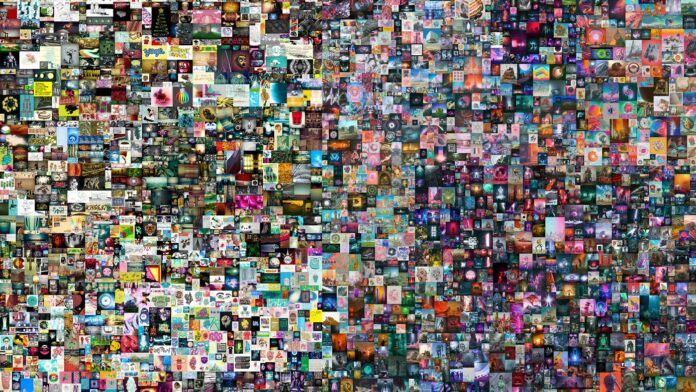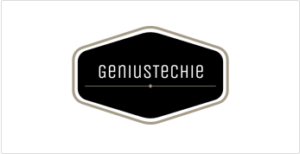Do you desire something genuine and unique than something mass-produced and displayed in a store window? NFTs are the digital equivalent of one-of-a-kind and custom-made objects, a piece of art with a rich history and significance. So why would you settle for a picture from the internet?
Whether you’re an artist or a collector, if you haven’t yet made the switch from traditional art, now is the moment to do so. Why? Of course, it’s for monetary gain. People are genuinely making millions of dollars per month selling their artworks, artworks that would likely go unnoticed if sold in malls, small pop-up shops, or at home.
Curious to know about where to sell NFT art? Scroll down the page and find out platforms where you can sell your NFT art.
- Enjin
Enjin is more than simply an NFT marketplace; it’s a full-fledged firm that works with all aspects of Blockchain technology. They develop NFT games, have their wallet, and produce tradable assets, among other things.
They do, however, have their marketplace where artists, collectors, and hobbyists may buy, sell, and trade products with one another. As of this writing, over 830,000 assets have been traded on their platform, totaling up to 44.7 million Enjin coins (which is around 65 million USD).
Takeaway
- The Ethereum network gets used.
- Transactions that do not require any gas.
- Enjin Coin (ENJ) and JumpNet are used to create gas-free NFTs.
- BakerySwap
BakerySwap is a Binance Smart Chain-based decentralized marketplace for trading cryptocurrency and blockchain-based digital assets. The platform provides various services, including rapid, low-cost decentralized financing (Defi) solutions using BakerySwap token (BAKE), the site’s coin. If you only require a few coins, they also have an NFT marketplace where you can buy artwork from artists all around.
Takeaway
- Binance Smart chain (BSC) network gets used.
- All transactions and swaps are subject to a 0.30 percent fee, with 0.25 percent going to liquidity providers and 0.05 percent to BAKE holders as a reward.
- Minting has become substantially less expensive, to the point that it is no longer necessary.
- AtomicHub
AtomicHub is a decentralized NFT marketplace that allows you to create, trade, and purchase original content. It has quickly grown in popularity as a distribution channel for NFT artworks, as well as, shockingly, AR items. Make a digital asset and trade it with other AtomicHub users. Forget about all those crazy convoluted trades you had to make to achieve what you wanted. With a few clicks, you may now purchase any NFT collectible that catches your eye.
Over 54 million NFTs have been placed for sale as of this writing, with over 25,000 daily output.
Takeaway
- WAX (Worldwide Asset eXchange) is the network for use.
- AtomicHub deducts a 2% transaction fee from the total purchase price.
- Twinci
Twinci is a decentralized marketplace that prioritizes the needs of the community. It was designed by and for artists. Artists and collectors can create, sell, purchase, and share their work without the involvement of a third party. Artists can also make money through royalties, according to Twinci, which is a way to draw long-term talent into the ecosystem.
Takeaway
- The Binance Smart chain network gets primarily used.
- You’ll need to buy/swap TWIN tokens from BNB to mint NFTs.
- The service cost is 2.5 percent, while the royalty fee is 10%.
- KnownOrigin
KnownOrigin is a digital art marketplace to buy genuine works of art. Every piece of digital art on KnownOrigin is unique and one-of-a-kind. The website allows artists to sell their work directly to collectors who place authenticity. It’s also protected by Ethereum’s blockchain technology, so buyers can get assured that it’s safe and has to get validated by a third-party curator.
Takeaway
- The Ethereum network gets used.
- Artists receive 85% of the proceeds, while KnownOrigin gets 15%.
- 2.5 percent goes to the platform, 12.5 percent to the artist (primary creator), and 85 percent to the seller on secondary transactions.
- OpenSea
OpenSea is a marketplace for finding, buying, and selling one-of-a-kind NFTs. It’s become one of the most popular Non-Fungible Token markets, and it’s constructed on two different blockchains: Ethereum and Polygon. The main difference is that although there are gas fees associated with minting NFTs and other sorts of transactions on the Ethereum marketplace, the Polygon blockchain is entirely free.
In any case, OpenSea sells tens of thousands of NFTs, as opposed to 2D photos, movies, music, and 3D models. It also has several NFTs made for games like Sipher. XYZ. It’s also the home of CryptoPunks, who seized the NFT world by storm, selling 10,000 pieces of pixel art, and trade is still going on there.
Takeaway
- Both the Ethereum blockchain and Polygon are supported.
- Each sale incurs a 2.5 percent fee from the seller.
- SuperRare
Super rare is an online marketplace for buying and selling one-of-a-kind, limited-edition digital artworks. Each piece of art gets generated by a network artist and tokenized as a valuable digital item that you can own and exchange. It is, without a doubt, a location where art and technology collide. In addition, SuperRare offers the $RARE token, which allows holders to participate in the network’s governance.
However, as with other NFT marketplaces, all artworks sold are one-of-a-kind, providing artists with a safe location to buy, sell, and swap artworks with others. Not only that, but it also serves as an online social experience, allowing artists, creatives, and collectors to connect via the internet. Because there is no man, you may purchase or sell any one-of-a-kind work of art in minutes.
Takeaway
- This program gets based on the Ethereum blockchain.
- A 3% transaction fee gets charged to the buyer.
- For the initial sale, the seller pays a 15% commission.
- Each time their creations get traded, the seller receives a 10% royalty.
- Rarible
Rarible is an Ethereum-based NFT marketplace that gets operated by the community. It’s a location where you can purchase and sell digital art, music albums, movies, and books without having to set up several adverts or rely on social media networks for exposure.
Active users can also earn RARI tokens by promoting fantastic items. Every week, they give out 75,000 RARI tokens and distribute awards based on usage. The platform focuses on the arts in particular: producers can distribute sneak peeks to followers while limiting ownership to purchasers by minting fresh NFTs, which give buyers and sellers instant access while maintaining attribution rights.
Takeaway
- The Ethereum network gets used.
- Sellers and purchasers get charged 2.5 percent, but the seller can set it to take the entire 5%.
- Artists get paid a ten percent fee every time their work is sold on the market (as royalty).
Conclusion
The landscape of how artists market and sell their work is shifting because of NFT artworks and other materials. It isn’t merely a passing craze. It’ll be there for a long time, thanks to those who respect honesty and appreciate art.
However, if you’re seeking NFT assets with utility, that is, assets can use, you should look into blockchain games, where you can buy NFT characters and goods to use in their respective games.






![SIMS 4 Download Free For PC Full Version 2019 [UPDATED] SIMS 4 Download](https://www.geniustechie.com/wp-content/uploads/2019/03/SIMS-4-Download-100x70.jpg)


